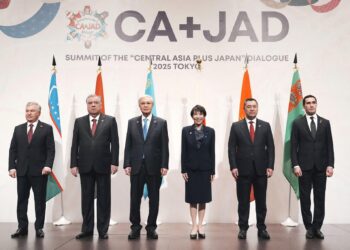LONDON (Realist English). The dollar will maintain its position as the world’s dominant reserve currency over the next decade, confounding growing calls from some countries for the adoption of alternatives, according to a closely watched annual survey of central banks.
Research by the Official Monetary and Financial Institutions Forum (OMFIF), a UK central banking think-tank, found that reserve banks managing close to a combined $5tn of assets expect the dollar to continue to decline as a proportion of global reserves at a “gradual” pace. However, it will still account for 54% of the total in 10 years’ time, compared with 58% currently, the survey found.
Reserve currencies are foreign assets held in large quantities by central banks for international payments and to support local currencies.
Among those trying to challenge the dollar’s hegemony is Brazil’s president Luiz Inácio Lula da Silva, who called for emerging markets to review their reliance on the greenback at a summit in Paris last week. South Africa’s president Cyril Ramaphosa said “the issue of currency” would be “on the agenda” for the upcoming meeting of Brics countries in August, which also includes Russia, India and China.
The dominance of the dollar has gradually declined in recent decades as the role of the US in global trade has waned, while the freezing of over $300bn worth of Russian central bank assets last year sparked fresh calls among some of the world’s largest emerging economies to shift away from the US currency. At the turn of the century the dollar accounted for more than 70% of global reserves, according to IMF data.
“The sense of de-dollarisation is in line with the historic trend over the last ten years,” said Nikhil Sanghani, managing director at OMFIF. “Reserve managers are telling us there’s unlikely to be a major trend from that path.”
The OMFIF survey found that 16% of reserve banks planned to increase US dollar exposure in the next couple of years, compared with 10% that planned to reduce it.
However, over the next 10 years, a net 6% of reserve banks said they expected to reduce their dollar holdings.
However, on a 10-year horizon, two-fifths of central banks expected to add to their renminbi holdings, forecasting that its share of global reserves would grow from about 3% to 6% by 2033.
“Reserve managers are saying that in 10 years we want to move in that direction but now is not the time to do it,” Sanghani said.
OMFIF’s study found that the euro was likely to be the biggest beneficiary of the trend away from the dollar and cooling sentiment on China.
The euro currently accounts for about 23% of global reserves, but a net 14% of central banks said they planned to increase their euro holdings over the next two years. That was ahead of demand for any other currency, and marked a big increase from last year when no banks had considered boosting euro reserves.


















